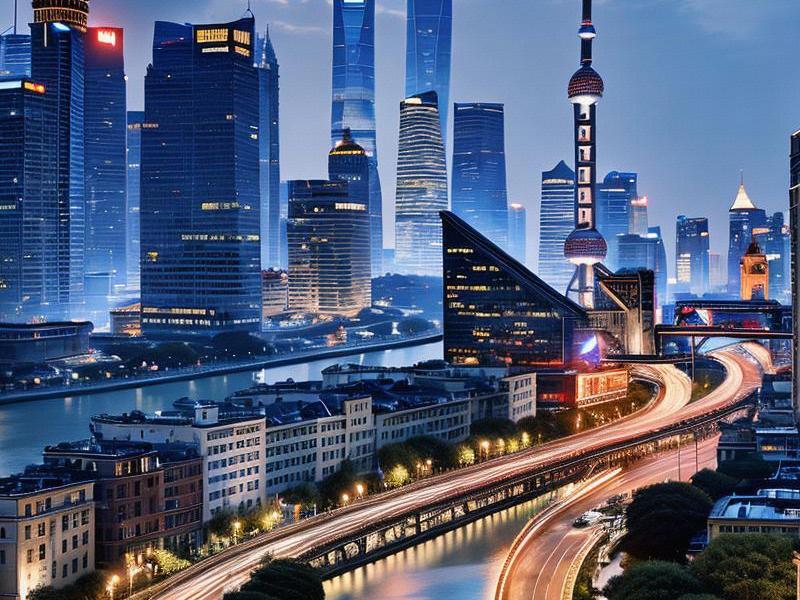Shanghai's Renaissance: A Modern Metropolis with a Rich Historical Tapestry
⏱ 2025-04-22 00:38 🔖 爱上海千花网
📢0℃

Nestled along the banks of the Huangpu River, Shanghai stands as a beacon of China's economic and cultural resurgence. Once a modest fishing village, the city has evolved into one of the world's most dynamic metropolises, blending ancient traditions with cutting-edge modernity. This article embarks on a journey through Shanghai's past, present, and future, highlighting its unique position as a bridge between tradition and innovation.
The history of Shanghai is deeply intertwined with its strategic location at the mouth of the Yangtze River, which has made it a vital port for centuries. During the Ming and Qing dynasties, Shanghai began to emerge as a significant trading hub, attracting merchants from across China and beyond. The opening of the Treaty Ports in the 19th century, following the First Opium War, marked a turning point in Shanghai's history. The city became a melting pot of cultures, with foreign concessions introducing Western architecture, cuisine, and customs.
The Bund, a waterfront area in the heart of Shanghai, stands as a testament to this era of cultural exchange. Once lined with grand European-style buildings, the Bund symbolizes the city's cosmopolitan past. Today, it is a popular tourist destination, offering breathtaking views of the futuristic skyline of Pudong across the Huangpu River.
The 20th century was a period of profound transformation for Shanghai. Following the founding of the People's Republic of China in 1949, the city underwent significant changes, including the rise and fall of the Cultural Revolution. However, it was in the late 20th century that Shanghai truly began to shine. In 1990, the Chinese government established the Shanghai Pudong New Area, marking a new era of economic reform and opening up. This initiative transformed Pudong from farmland into a global financial district, home to iconic landmarks such as the Oriental Pearl Tower, the Jin Mao Tower, and the Shanghai Tower.
新上海龙凤419会所
Today, Shanghai is recognized as one of the world's leading financial centers, rivaling cities like New York and London. The city's skyline is a marvel of modern architecture, with skyscrapers that pierce the clouds and reflect the vibrancy of its economy. Pudong, in particular, has become synonymous with innovation and ambition, housing the Shanghai Stock Exchange, the World Financial Center, and numerous multinational corporations.
Beyond its economic prowess, Shanghai is a cultural hub that celebrates its rich heritage while embracing the future. The city boasts an array of museums, galleries, and theaters, including the Shanghai Museum, known for its extensive collection of Chinese art, and the Shanghai Grand Theatre, a venue for world-class performances. The French Concession, with its charming cobblestone streets and historic buildings, offers a glimpse into the city's colonial past, while the Yu Garden, a classical Chinese garden, provides a serene escape from the urban hustle.
Shanghai's culinary scene is another aspect that reflects its unique blend of traditions. From the savory flavors of Xiaolongbao (soup dumplings) to the sweet delights of Shengjianbao (pan-fried buns), the city's food culture is a testament to its diverse influences. The bustling night markets, such as the Nanxiang Mantou Dian, offer an authentic taste of local delicacies, while the city's numerous Michelin-starred restaurants cater to international palates.
上海龙凤419会所
In recent years, Shanghai has also made significant strides in sustainability and environmental conservation. The city has set ambitious goals to reduce carbon emissions and promote green development. Initiatives such as the construction of the world's first maglev train line, which connects Pudong International Airport to the city center, demonstrate Shanghai's commitment to innovation and efficiency. Additionally, the city has invested in renewable energy projects, green building standards, and urban greening efforts to crteeaa more sustainable future.
Education is another area where Shanghai excels, consistently ranking among the top cities in the world for educational attainment. The city is home to prestigious institutions such as Fudan University and Tongji University, which attract students and researchers from around the globe. Shanghai's emphasis on education and innovation has contributed to its reputation as a global city of knowledge and progress.
As Shanghai continues to grow and evolve, it faces challenges such as managing urbanization, preserving cultural heritage, and addressing environmental concerns. However, the city's resilience and adaptability have allowed it to overcome obstacles and emerge stronger. The government's proactive approach to urban planning, coupled with the efforts of its residents, ensures that Shanghai remains a vibrant and livable city.
爱上海419
Looking ahead, Shanghai is poised to play an even greater role on the global stage. The Belt and Road Initiative, launched by China, positions Shanghai as a key node in the network of international trade routes, further enhancing its economic significance. The city's commitment to innovation, sustainability, and cultural exchange will continue to drive its development and solidify its status as a global leader.
In conclusion, Shanghai's renaissance is a story of transformation, resilience, and ambition. From its historic roots to its modern achievements, the city exemplifies the spirit of China's rise as a global power. As Shanghai continues to innovate and evolve, it remains a testament to the enduring appeal of a city that bridges the past and the future, tradition and modernity, East and West.
Shanghai Style Revolution: How Local Women Are Crafting a New Global Beauty Paradigm《边界消融时:上海与周边城市的"同城化"实验》Shanghai Showgirls: Entertaining Life on the Edge of CultureShanghai and the Surrounding Area: A Dynamic Hub of Economic and Cultural ExchangeShanghai's Nightlife Evolution: The New Era of Entertainment Clubs in China's Global CitySilicon Bund: Shanghai's Ambitious Quest to Become Asia's Tech Capital《共饮一江水:长三角生态绿色一体化发展示范区三年记》Shanghai's Nightlife Evolution: How Entertainment Venues Are Redefining Urban Leisure in 2025Shanghai's Neuro-Aesthetic Singularity: Where Jiangnan Silk Algorithms Rewrite Quantum GlamourNeon Renaissance: How Shanghai's Elite Clubs Are Redefining China's Nightlife Economy

